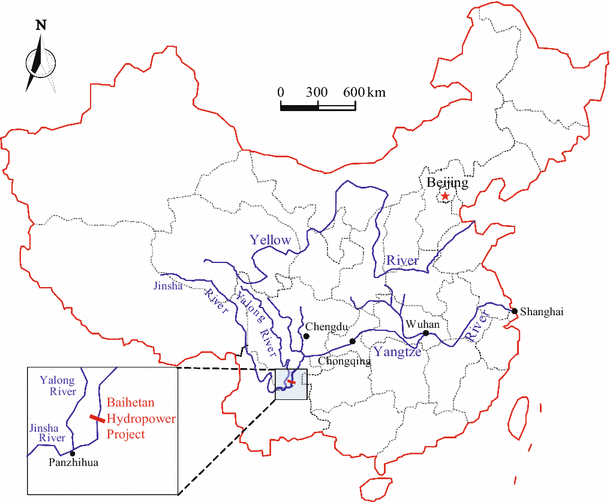Geography
Baihetan Dam: World’s Second Biggest Hydropower Dam
- 29 Jun 2021
- 5 min read
Why in News
Recently, China has put into operation the Baihetan Dam, world’s Second Biggest Hydropower Dam.
- The Three Gorges Dam is the largest hydropower dam in the world and is also along China’s Yangtze River. It began operations in 2003.
Key Points
- About the Dam:
- It is on the Jinsha River, a tributary of the Yangtze (the longest river in Asia).
- It has been built with a total installed capacity of 16,000 megawatts.
- It will eventually be able to generate enough electricity each day once to meet the power needs of 5,00,000 people for an entire year.
- Significance for China:
- It is part of Chinese efforts to curb surging fossil fuel demand by building more hydropower capacity.
- This comes at a time when dams have fallen out of favor in other countries due to environmental complaints (such as flooding farmland and disruption of the ecology of rivers, threatening fish and other species).
- China’s pledge in 2020 to reach carbon neutrality by 2060 had also added urgency to the construction.
- It is part of Chinese efforts to curb surging fossil fuel demand by building more hydropower capacity.
- China’s Other Upcoming Projects:
- China's planned mega-dam in Tibet's Medog County, which is set to surpass the Three Gorges Dam in size, has been described by analysts as a threat to Tibetan cultural heritage and a way for Beijing to effectively control a substantial portion of India's water supply.
- The plan is to build a dam on the lower reaches of the Brahmaputra River.
- The Brahmaputra (called Yarlung Tsangpo in China) is one of the longest rivers in the world.
- Starting in the Himalayas in Tibet, it enters India in Arunachal Pradesh, then passes through Assam, Bangladesh, and empties into the Bay of Bengal.
- The impact of dams on China's portion of the Mekong has also raised fears that irreversible damage is being inflicted upon a waterway which feeds 60 million people downstream as it winds through to the Vietnamese Delta.
- China's planned mega-dam in Tibet's Medog County, which is set to surpass the Three Gorges Dam in size, has been described by analysts as a threat to Tibetan cultural heritage and a way for Beijing to effectively control a substantial portion of India's water supply.
- Concerns:
- Agriculture:
- A huge dam (like on Brahmaputra) could hold back the massive amount of silt carried by the river (Silty soil is more fertile than other types of soil and it is good for growing crops.)
- This could affect farming in the areas downstream.
- Water Resources:
- India is also worried about the release of water during the monsoons, when north-eastern states such as Assam experience floods.
- Change in the flow rate during times of standoff between the countries is also a cause of concern.
- During the 2017 Doklam border standoff between India and China, China stopped communication of water flow levels from its dams.
- Ecological Impact:
- The ecosystem in the Himalayan region is already on the decline. Several species of flora and fauna are endemic to this part of the world and some of them are critically endangered. It could have disastrous consequences in this ecologically sensitive zone.
- The massive engineering projects have also displaced hundreds of thousands of local communities and prompted concern in neighbouring countries.
- Agriculture:
Way Forward
- India has urged China to ensure that the interests of downstream states are not harmed by any activity in upstream areas. Meanwhile, India is considering building a 10 gigawatts (GW) hydropower project in the Dibang valley in Arunachal Pradesh, to mitigate the adverse impact of the Chinese dam.
- However, the larger point is that too much hydro-power development is not a great idea in a fragile mountainscape.





